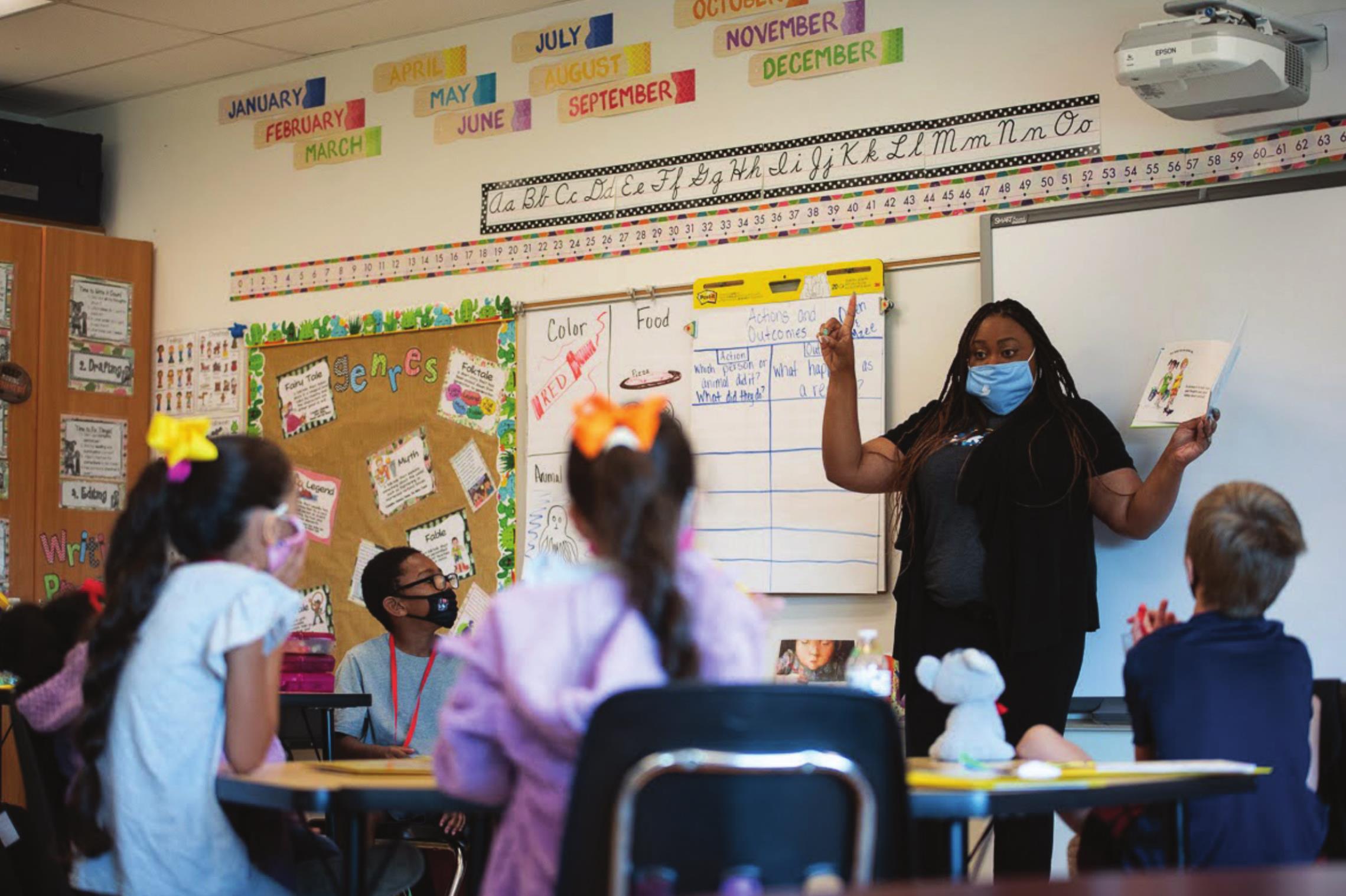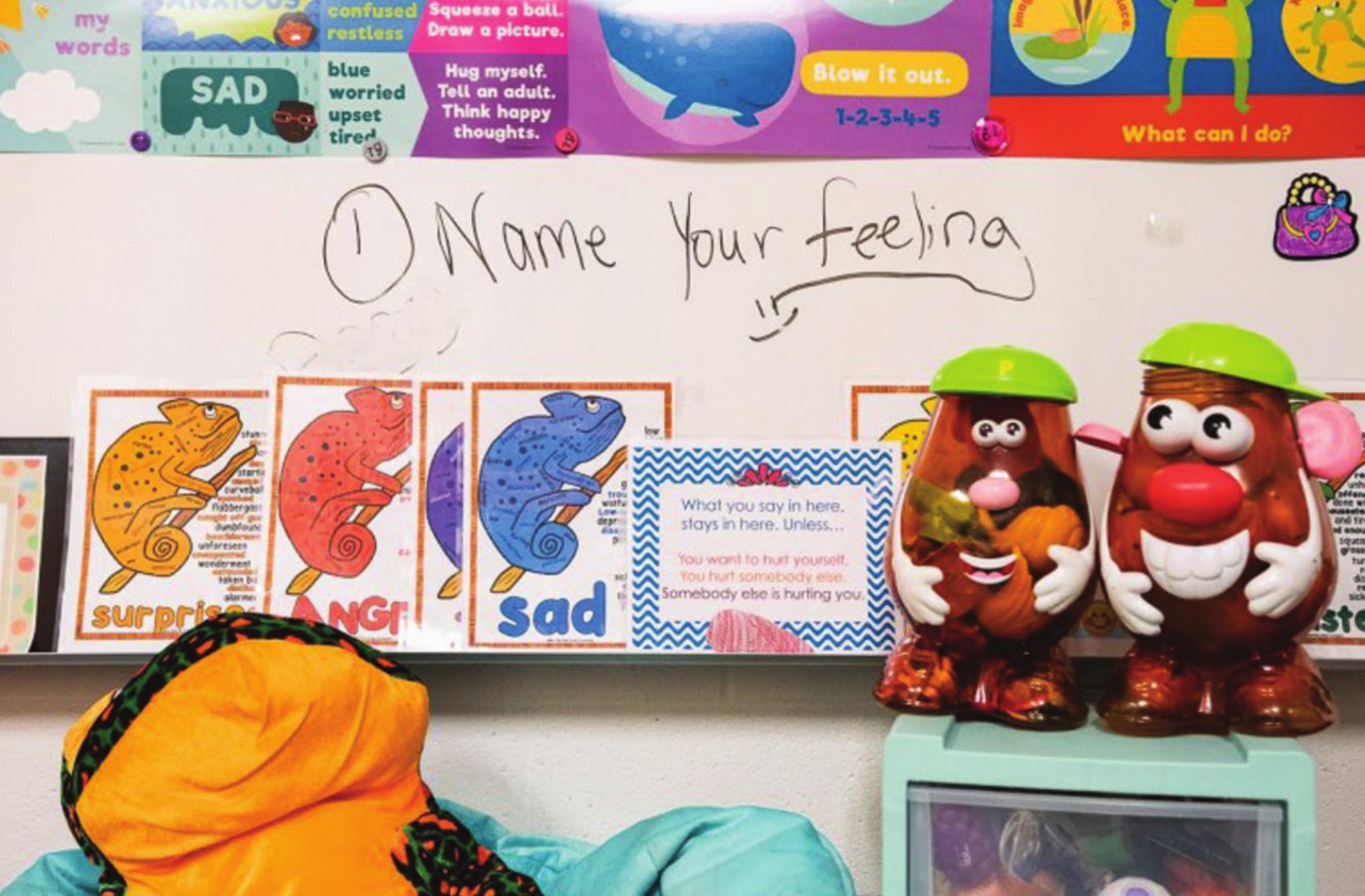When Pam Matthews became a teacher in 1981, it was rare for even one of her students in southeast Oklahoma to have divorced parents.
Now, kids who haven’t experienced the emotional toll of divorce are the exception.
Three years ago, Matthews became the superintendent at Lane Public Schools — a pre-kindergarten through eighth grade district serving 250 students about 2-and-a-half hours southeast of Oklahoma City.
After working in education for nearly four decades, Matthews said students’ mental health is at an all-time low. She said they struggle to cope with family stress, which increased during the pandemic as unemployment spiked and physical and mental health declined. In rural areas like Lane, it is difficult to find help.
A new state initiative aims to increase support for struggling students. But administrators from some of Oklahoma’s small, rural districts said the effort doesn’t address their community’s needs.
District officials said even if they received the funding, a shortage of mental health professionals in rural parts of the state would make it nearly impossible to find qualified candidates.
Of the state’s 529 school districts, 35 percent applied for the School Counselor Corps program, which beginning this school year provides half of the salary and benefits to hire new school counselors or licensed mental health professionals for three years. Districts are responsible for the remaining costs.
Every district which applied was awarded the full amount they requested, Annette Price, a spokeswoman for the Oklahoma State Department of Education, said.
Nearly $35.7 million in federal pandemic relief funds were awarded to 193 districts, including six charter schools and a cooperative of 13 smaller districts in and around Osage County that applied for a shared grant. More than 300 new school counselors, social workers, licensed mental health professionals and recreational therapists were funded through the initiative, which was announced days after an Oklahoma Watch investigation found that schools are often the only resource for rural students in crises.
These new positions will improve Oklahoma’s counselor-to-student ratio. Students at schools with the American School Counselor Association’s recommendation of one counselor per 250 students tend to miss less school and have higher test scores, according to research. Oklahoma currently has an average of one counselor per 411 students.
The U.S. Department of Education touted Oklahoma’s Counselor Corps initiative in an announcement last month praising the use of funds for mental health support. Secretary of Education Miguel Cardona highlighted the program on Twitter as one of six “amazing examples” of states addressing student needs.
The grant, however, leaves rural districts at a disadvantage, according to Matthews and her eastern Oklahoma counterparts in Peggs, Lowery and Shady Grove.
None of those districts had a school counselor on staff during the 2020-21 school year. Yet only one applied for the grant, despite heightened mental health challenges brought on by the pandemic.
“We need a counselor on site who can help our kids deal with things like when a parent dies or loses a job,” Matthews said. “But that’s just not an easy thing to do in smaller districts like ours with limited resources.”
Large districts capatize on grant
More than 75 percent of Oklahoma’s school districts have fewer than 1,000 students, according to state enrollment data. And while they were all eligible, only one-third of those districts applied for the grants. More than half of the state’s larger districts applied for and received funding.
Tulsa Public Schools will also add 12 counselors, including six focused on college and careers and six mental health specialists starting this fall. Edmond Public Schools will add five elementary school counselors and three high school counselors.
Epic Charter Schools, which is among the state’s largest districts and one of the largest virtual charter schools in the nation, did not apply for the grant.
Lowrey Superintendent Cris Wyse said his district, located 20 miles northwest of Tahlequah, cannot afford to pay its share for even one school counselor despite receiving $715,000 from a federal emergency relief program. He also said the application’s 2- week turnaround didn’t leave enough time for staff to prepare the required information, which included student demographic information, a budget breakdown, a description of the new positions and how they would be evaluated.
State education officials said the quick turnaround was necessary to give districts that received the grants enough time to post the positions, interview candidates and train new staff for the upcoming school year.
Matthews and Shady Grove Superintendent Emmett Thompson echoed Wyse’s concerns and said access to qualified candidates provides another challenge for rural districts.
Peggs Superintendent John Cox did apply and received funding for a new licensed professional counselor for his 200-student district. He personally filled out the application and plans to move a parttime teacher, who is already licensed, into a full-time counseling position next school year.
Cox is president of the Organization of Rural Elementary Schools, a coalition that represents more than 100 schools statewide. He said many rural schools can’t afford to take a teacher out of the classroom. It’s difficult to attract licensed counselors to schools when they can make more money in private practice, he said.
“If I was in a different situation where I didn’t have access to a counselor. It would almost feel like it would be a waste of time to write the application because I wouldn’t be able to find somebody if I was awarded,” Cox said.
This concern is heightened for districts in what state education officials call mental health deserts, pockets of eastern and western Oklahoma where there are as few as one mental health provider per 150,000 people.
Re-emphasizing the role of school counselor
While licensed counselors are in short supply, there is an abundance of certified school counselors, which have different training and requirements from licensed mental health providers.
Oklahoma has more than 700 certified school counselors currently working as teachers, according to unpublished research conducted by the Oklahoma Educator Supply and Demand Network state education officials said.
State Superintendent of Public Instruction Joy Hofmeister said duirng the past decade these counselors were asked to move into the classroom amid Oklahoma’s teacher shortage. Now, the state will again look to these counselors to meet student needs.
“As we are seeing more teachers coming into schools, then we are able to replace them with another teacher and pull that licensed professional counselor or our credentialed school counselor back into the role,” Hofmeister said.
Hofmeister said the grant protects counselors from being used as a “catchall in the administrative office.”
School counselor duties often include test proctoring, lunch or recess duty, data entry and other tasks that do not require counseling credentials. The grant refers districts to American School Counselor Association guidelines for appropriate and inappropriate duties, and mandates that the counselors work “only in roles that reflect their professional expertise.”
Oklahoma City Public Schools, the state’s largest urban district, will add 12 new mental health professionals and a coordinator through the grant.
Since 2019, the district of more than 30,000 students has been ramping up its team of counselors and mental health providers in an effort to boost students’ academic success by helping them cope with stress at home that often creates distractions in the classroom. The district added counselors, worked closely with social workers to get resources to parents in need of food or other assistance and hired a director of mental health to coordinate the effort.
Now, the district has at least one counselor at every school, which was a goal of the Pathway to Greatness Plan to boost student wellbeing.
Deputy Superintendent Jason Brown said the district cut costs elsewhere, like reducing professional development, to fund the efforts.
“Those things are still important,” Brown said. “But they were less important than mental health.”
‘These kids need someone they can trust’
On a Wednesday morning in a classroom on the second floor of Cesar Chavez Elementary School, Quanetta Broom reads to a small group of second graders during summer school.
Broom raises and lowers her voice emphatically as she paces around the room holding up the book to show off pictures of a bucket. The bucket, she said, is for positive emotions. She compliments a student’s drawing and explains how that helps fill up both of their buckets. She smiles under her blue mask and then giggles with the students as she realizes they can’t see the smile.
“We can smile with our eyes,” she tells them. “That fills up the bucket, too.”
Saying something mean to another student or experiencing something sad at home can empty the bucket, too.
Broom has been a school counselor for 6 years. When she started with the district, she worked at two schools. She spent one day a week at Oakridge Elementary, which made it difficult to build relationships and trust with students. On the other four days, she was the only counselor at Cesar Chavez so she was constantly responding to kids in crisis.
“I was having to turn away kids, especially those friends that would come by a lot,” Broom said. “I was reacting instead of being proactive because that’s all I could do to keep up.”
Now, Broom is one of two full-time counselors at Cesar Chavez.
She spends time in classrooms teaching second graders about their feelings and helping fourth graders learn coping techniques.
And she makes time for her “friends,” students who frequently show up to her colorful office to talk.
“I have a friend who comes by pretty much every morning around this time,” she said looking at her clock as 9 a.m. approached. “These kids need someone to talk to, someone they can trust and those positive relationships, they can change everything.”
Grants totaling $35 million bring mental health counselors to schools statewide
The Oklahoma State Department of Education awarded $35.7 million in federal pandemic relief funds to school districts across the state to increase the number of counselors and mental health professionals in schools. School Counselor Corps grants were awarded to 193 districts, including six charter schools and a cooperative of 13 smaller districts in and around Osage County that applied together. The grants will support more than 300 new school counselors, social workers, licensed mental health professionals and recreational therapists. The funds will be spread out across 3 years beginning in the fall and require matching funds from the districts.
Oklahoma Watch’s Jennifer Palmer contributed to this report.




